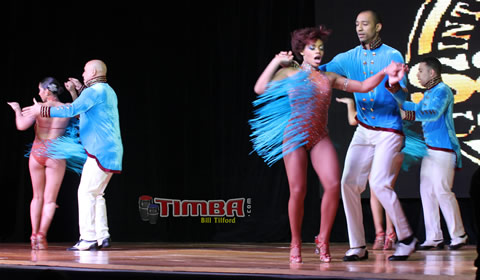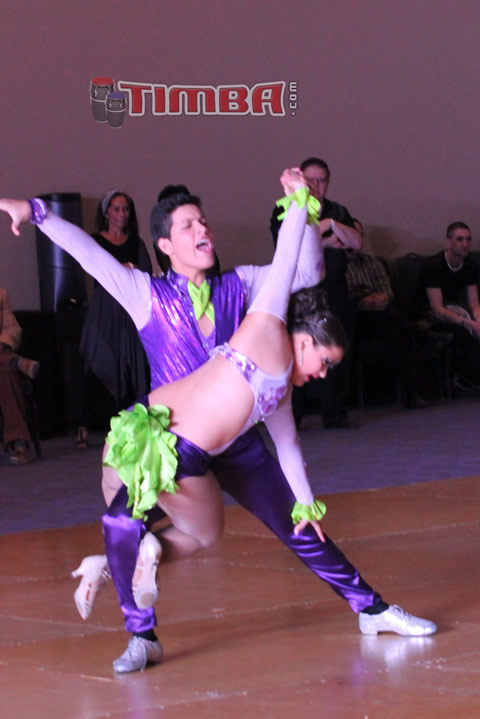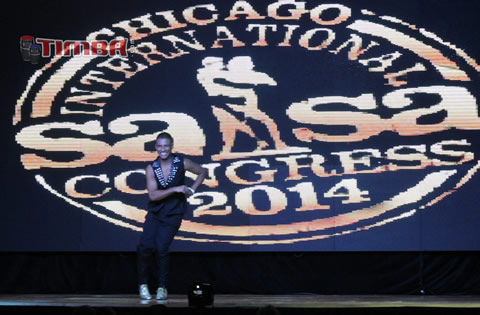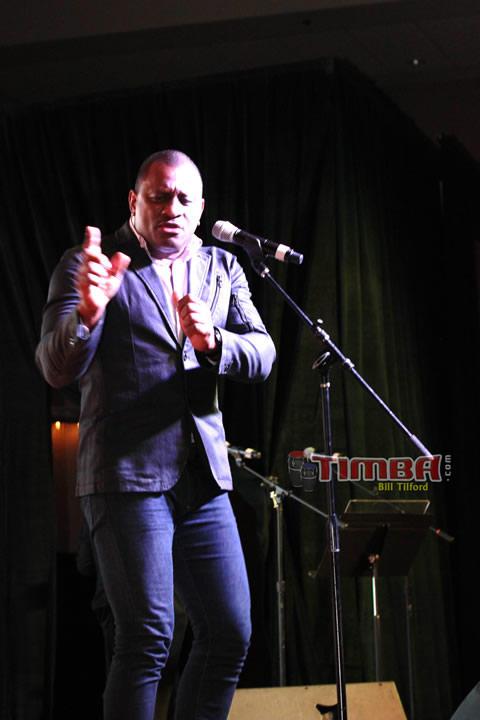Archivo
New Stuff[hide]
Resenas: Vacilón Santiaguero (Circle 9 ...
Staff: Bill Tilford
Fotos: Tom Ehrlich : 2024 Monterey Jazz, P...
Fotos: Tom Ehrlich : 2024 Monterey Jazz Fe...
Fotos: Tom Ehrlich : testing 123
Grupos: Pupy y los que S... : Discography - 1995- F...
Reportes: From The St... : Cubadisco 2...
Reportes: From The St... : Jazz Plaza ...
Fotos: Tom Ehrlich : Irakere 50th Annivers...
Fotos: Tom Ehrlich : Irakere
Resenas: Joey Altruda Presents: El Gran ...
Timbapedia: 09. Interviews -... : Carlos del Pino ...
Fotos: Tom Ehrlich : 2023 Monterey Jazz Fe...
Fotos: Tom Ehrlich : 2023 Monterey Jazz Fe...
Photos of the Day [hide]
Sin Clave No Hay Na
The 13th Annual Chicago International Salsa Congress - Mostly NOT Unlucky
Article by Bill Tilford, all rights reserved

So, we are looking at the 13th anniversary of an event that is also starting on the 13th day of the month (fortunately, not a Friday), and this might have sent many persons scrambling for their rabbit's foot or other special charms, but most of the Chicago International Salsa Congress was superb (we'll get to the exceptions a little later). 
The CISC is a 4-day event with instructional workshops, dance demonstrations, dance contests and social dancing with both live bands and DJs. I missed the workshops this year due to scheduling issues but did note that Rueda and old school Mambo workshops were available. Rueda is gradually growing in popularity in the Chicago area, and there are now some evening lessons in some of the clubs. The quality of the dance performances was superb this year - a lot of the music was retro (Machito, Cortijo, Alegre All Stars etc.) which means that some musical history is being transmitted to young people along with the dance moves. Four cheers for this. Likewise, if I look at the four nights as a package, there was more dance that was both technically impressive and something you could picture actually happening in a club at the same time (if you bear in mind that once upon a time, the Lindy Hop was also quite athletic). The show stealers were two youth groups from Cali, Colombia, Son de Luz and Elite Rumba Dance, who put on performances that electrified the audience (including me, and I am not easily moved). I hope that both of these groups get opportunities for performances in the rest of the United States - they deserve it. The Cali style has enough legwork to be noticably distinct from its cousins in other countries. Also worth a special mention is the tribute to Machito performed by the Sekou McMiller Dance Project using music from Fireworks. This was especially fitting since by most calendars this year marks the 75th Anniversary of the founding of the Machito Orchestra.

Since Chicago's event and San Francisco's event always fall on the same weekend, some people have always been tempted to compare the two. This is a little like comparing apples and oranges. Both events serve important, if slightly different purposes. The Chicago event is doing a very good job of exposing young people to the earlier music and some of the earlier dance styles (especially Mambo and Pachanga), and without that exposure, the future for this type of music and dance would look bleak. The San Francisco event does an excellent job of presenting the new. We need both. I wish that they fell on different weekends, but I also wish that there was world peace. Blessings to both.
I mentioned earlier that the number 13 did find a place to assert itself, and this happened in the live music area. Snowstorms kept Ray de la Paz away from Chicago, but his backing band appeared and did a servicable set with a capable substitution play that included Nabori's Robert Figueroa on vocals. The Cachao Mambo All Stars performance was marred by some apparent backstage miscues and some sound system issues. They did ultimately play, but this was probably not the best introduction of them to new listeners. Mimi Ibarra's set was very energetic, but again, some sound issues. Things started to come together with the Moncho Rivera set, and the last band, Porfi Baloa y sus Adolescentes, was clicking on all cylinders. I am discussing this at some length with some reluctance, but this needs to be aired out because it so often happens at other events. The production values for the dance performances to recorded music were superb, and with a few exceptions (there was one DJ who shall remain nameless that has apparently acquired a pump-up-the-bass disorder that he needs to treat), the DJ segments had acceptable sound, and I especially liked the ones playing some of the classic older bands. The excellence of the production values for the recorded music makes the issues with the live music all the more noticable, especially because I commonly hear the complaint from some dancers that they prefer recorded music to live when dancing. These types of issues with the sound only reinforce and validate their prejudices, I have seen this in plenty of other other settings besides the CISC and I am not singling them out. Rather, I am pontificating here that anyone who is presenting a combination of live and recorded music to a large audience should have a sense of mission to present both equally effectively. Yes, live music is harder, and sometimes that means selecting special people to handle it. But without this, the dancers who swear that recorded music is better than live are only being given ammunition to spread this unfortunate belief to other dancers.

A quick note about the Venezuelan Salsa style. After listening to Porfi Baloa's band, I can only laugh at anyone who complains that Timba is too fast. The speed of this left a lot of Timba in the dust; and no dancers collapsed from exhaustion while I was in the ballroom. The difference I think is that the Venezuelan rhythm style is less intricate than Timba (but still catchy enough to be fun). . Those of you with a sense of Rock and Roll history have my blessing to use the quote "It ain't the speed, it's the motion" the next time you find yourselves in an argument about these points.
Final thought: In spite of everything I just said above about the live music situation, I am going to give the Congress a B+. This is an aggregrate grade that includes an A+ for everything I saw and heard except for the live music production issues, and even there, the bands mostly played through. And yes, I absolutely recommend this event to future attendees. But I hope that event organizers everywhere are reading this and taking my words to heart. Live music should be treated with the care and feeding that it requires. Back in the day, dancers and bands bonded and interacted during performances, and that fell by the wayside over the years. There is both an opportunity and a responsibility to rebuild those bonds, but this requires TLC with the sound system and the bands.
There are two photo galleries associated with this event.
The first two nights may be viewed here.
The final two nights may be viewed here.





















